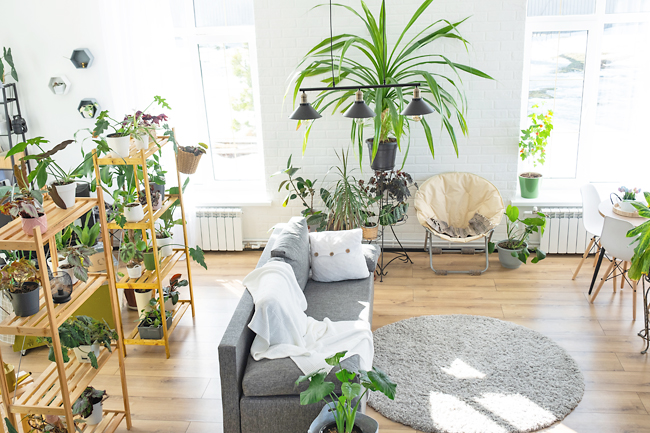BERNAMA/DPA – When temperatures soar outside, keeping your home cool becomes essential.
But what if the usual methods like ventilating and shading windows aren’t enough?
Instead of immediately turning to air conditioning, consider using natural solutions – specifically, the right plants. Experts explained how certain greenery can help cool a home during hot weather.
HOW IT WORKS
Indoor plants can help raise humidity through photosynthesis, absorbing carbon dioxide while releasing oxygen and water.
The moisture released by the plants into the air evaporates and increases the humidity, said gardening consultant for a German homeowners association Martin Breidbach.
This transpiration process requires energy and with the evaporated water, the plants cool themselves and their surroundings.
Plants can also help to clean the air by absorbing dust particles and contaminants.
Gardening engineer Heinrich Beltz noted that potting soil has a similar effect as it also releases water into the air. Clay flower pots, being porous, also release water – unlike plastic containers.
All that said, greenery can improve the room climate somewhat, but plants cannot replace strong ventilation.

WHICH PLANTS TO CHOOSE?
Basically, all plants improve the room climate, Breidbach said, “since they cool off the surrounding air through the process of photosynthesis”. Plants that have small leaves such as birch fig or ornamental asparagus are especially good at absorbing dust particles. Indoor linden or Cyprus grass raise the humidity particularly well.
For dry, hot rooms, the rule is: The more plants, the better. If the room climate is already pleasant, then the number of plants is sufficient. If the air is moist, you probably have too many plants, Beltz said.
The optimal humidity level for rooms is 40-60 per cent.
The plants’ effect on the room climate also depends on their size and how much you water them.
As a rule of thumb, the more you water, the stronger the cooling effect and the increase in humidity.
Room plants with big leaves therefore have a bigger effect since they need lots of water. However, “a large cactus can naturally help out more than a tiny birch fig”, Beltz said.
WHERE TO KEEP PLANTS?
Be it the living room, bedroom or bathroom, just how many plants you can place inside a room depends on the available light.
Most plants need a lot of light and should be placed near the window. Ferns and spider plants, by contrast, do well with less light.
Dragon-tail plant, peace lily and dracaena prefer bright locations without direct sunlight. They can be placed at some distance from the window.
Some plants, like citrus plants are sensitive to dry air which makes them less suited for moistening dry rooms, Beltz said.
ROLE OF OUTDOOR PLANTS
Even outdoors, plants can help to cool things off on the inside.
Plants growing outside your windows can reduce the amount of direct sunlight coming through and prevent rooms inside from heating up.
Breidbach recommended growing climbing plants on a pergola. However, you shouldn’t place them too close to the windows or the greenery could block the view and reduce “the air flow when ventilating the rooms”.
For large planters and troughs, Breidbach recommended perennial climbing plants such as climbing roses, clematis and hops, which develop well on a trellis.
If you want more variety, annual morning glories, bell vines or runner beans are another option.
Plants growing on walls also have an insulating effect. Growing ivy on your home, for example, can help to regulate indoor temperatures, Beltz said.
WHICH CLIMBING PLANTS ARE BEST?
Climbers make for great natural blinds.
Grow them on a trellis at some distance from the facade and their leaves will provide shade in hot weather.
Breidbach recommended to inform yourself in advance as to which plants are suited to a specific location and to the facade at hand.



















































